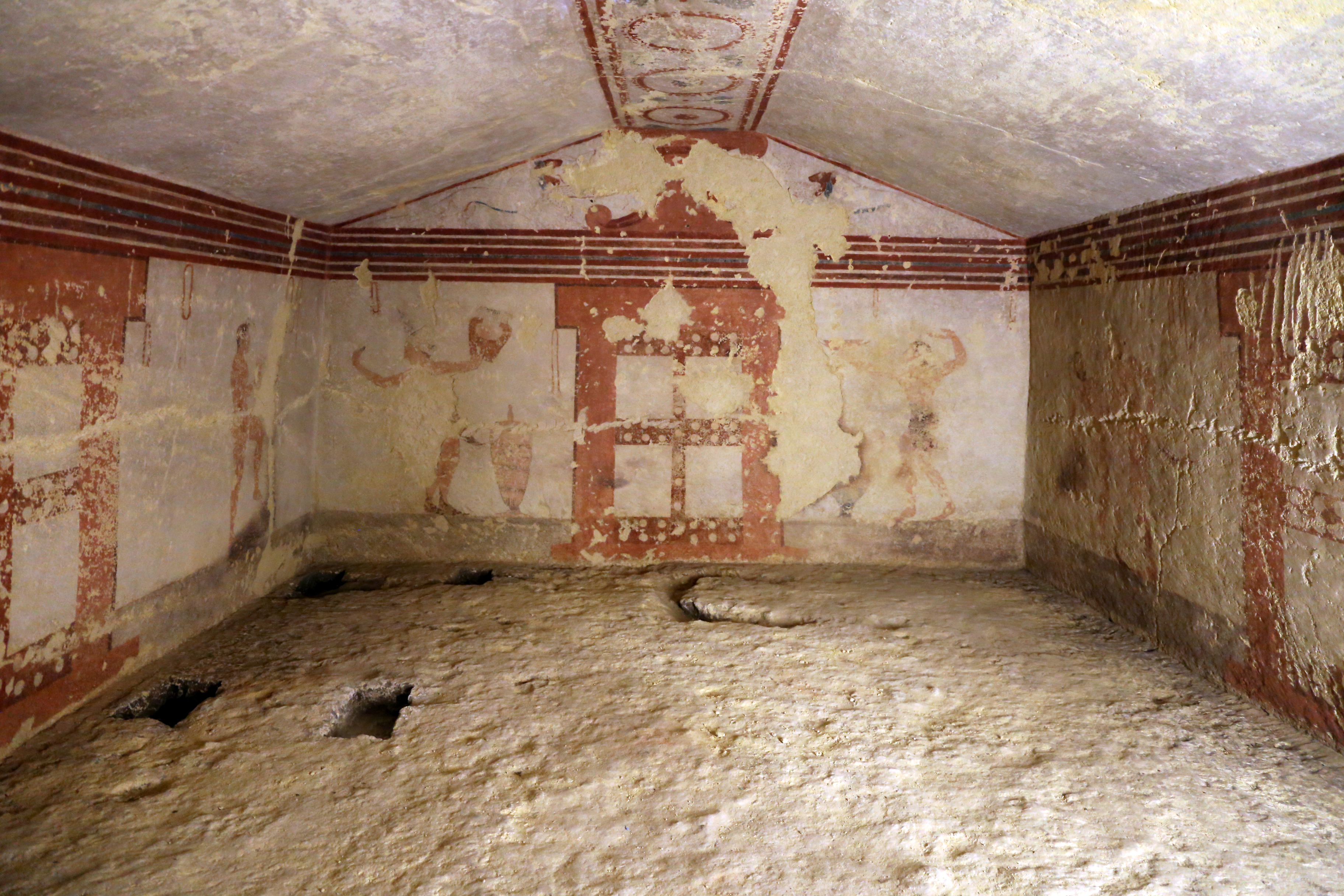Tomb of the Whipping on:
[Wikipedia]
[Google]
[Amazon]

 The Tomb of the Whipping ( it, Tomba della Fustigazione) is an Etruscan tomb in the
The Tomb of the Whipping ( it, Tomba della Fustigazione) is an Etruscan tomb in the
Images of the tomb
{{coord, 42, 14, 57.5, N, 11, 46, 12.8, E, region:IT-VT_type:landmark_source:kolossus-dewiki, display=title 1960 archaeological discoveries Whipping Whipping

 The Tomb of the Whipping ( it, Tomba della Fustigazione) is an Etruscan tomb in the
The Tomb of the Whipping ( it, Tomba della Fustigazione) is an Etruscan tomb in the Necropolis of Monterozzi
The Monterozzi necropolis ( it, Necropoli dei Monterozzi) is an Etruscan necropolis on a hill east of Tarquinia in Lazio, Italy. The necropolis has about 6,000 graves, the oldest of which dates to the 7th century BC. About 200 of the tomb chamb ...
near Tarquinia, Lazio
it, Laziale
, population_note =
, population_blank1_title =
, population_blank1 =
, demographics_type1 =
, demographics1_footnotes =
, demographics1_title1 =
, demographics1_info1 =
, demographics1_title2 ...
, Italy
Italy ( it, Italia ), officially the Italian Republic, ) or the Republic of Italy, is a country in Southern Europe. It is located in the middle of the Mediterranean Sea, and its territory largely coincides with the homonymous geographical ...
. It is dated to approximately 490 BC and named after a fresco
Fresco (plural ''frescos'' or ''frescoes'') is a technique of mural painting executed upon freshly laid ("wet") lime plaster. Water is used as the vehicle for the dry-powder pigment to merge with the plaster, and with the setting of the plast ...
of two men who flog a woman in an erotic context. The tomb was discovered and excavated in 1960 by Carlo Maurilio Lerici. Most of the paintings are badly damaged.
Description and interpretation
The tomb has one room.Komos
The Kōmos ( grc, κῶμος; pl. kōmoi) was a ritualistic drunken procession performed by revelers in ancient Greece, whose participants were known as komasts (κωμασταί, ''kōmastaí''). Its precise nature has been difficult to recon ...
participants, musicians, dancers and a nude boxer are painted on the walls. This suggest an influence of the cult of Dionysus
In ancient Greek religion and Greek mythology, myth, Dionysus (; grc, wikt:Διόνυσος, Διόνυσος ) is the god of the grape-harvest, winemaking, orchards and fruit, vegetation, fertility, insanity, ritual madness, religious ecstas ...
. On the wall in the back opposite the entrance two of these figures are separated by a false door, a door painted on the wall.
On the wall to the right of the entrance two erotic scenes are visible. They consist of two men and one woman each, also separated by a false door. The scene on the left shows two men who probably have sexual intercourse with the woman standing between them. The scene on the right side depicts a woman bending and holding the hips of a bearded man to the right who is flogging her with a flat hand. Possibly the woman performs fellatio
Fellatio (also known as fellation, and in slang as blowjob, BJ, giving head, or sucking off) is an oral sex act involving a person stimulating the penis of another person by using the mouth, throat, or both. Oral stimulation of the scrotu ...
on the male, but damage makes it impossible to determine for sure. Another beardless man stands behind her to the left, with one hand on her buttocks and a raised whip in the other hand.
The flogging might have had a ritualistic nature. Erotic scenes like these had an apotropaic
Apotropaic magic (from Greek "to ward off") or protective magic is a type of magic intended to turn away harm or evil influences, as in deflecting misfortune or averting the evil eye. Apotropaic observances may also be practiced out of superst ...
purpose to keep demons away from the tomb. They were also life-affirming and need to be interpreted in clear contrast to the symbolism of death. Along with the frescoes of the Tomb of the Bulls
The Tomb of the Bulls ( it, Tomba dei Tori) is an Etruscan tomb in the Necropolis of Monterozzi near Tarquinia, Lazio, Italy. It was discovered in 1892 and has been dated back to either 540–530 BC or 530–520 BC. According to an in ...
these paintings are relatively rare examples of explicit sexual scenes in Etruscan art
Etruscan art was produced by the Etruscan civilization in central Italy between the 10th and 1st centuries BC. From around 750 BC it was heavily influenced by Greek art, which was imported by the Etruscans, but always retained distinct charact ...
, which were far more common in Ancient Greek art
Ancient Greek art stands out among that of other ancient cultures for its development of naturalistic but idealized depictions of the human body, in which largely nude male figures were generally the focus of innovation. The rate of stylistic d ...
.
References
External links
Images of the tomb
{{coord, 42, 14, 57.5, N, 11, 46, 12.8, E, region:IT-VT_type:landmark_source:kolossus-dewiki, display=title 1960 archaeological discoveries Whipping Whipping